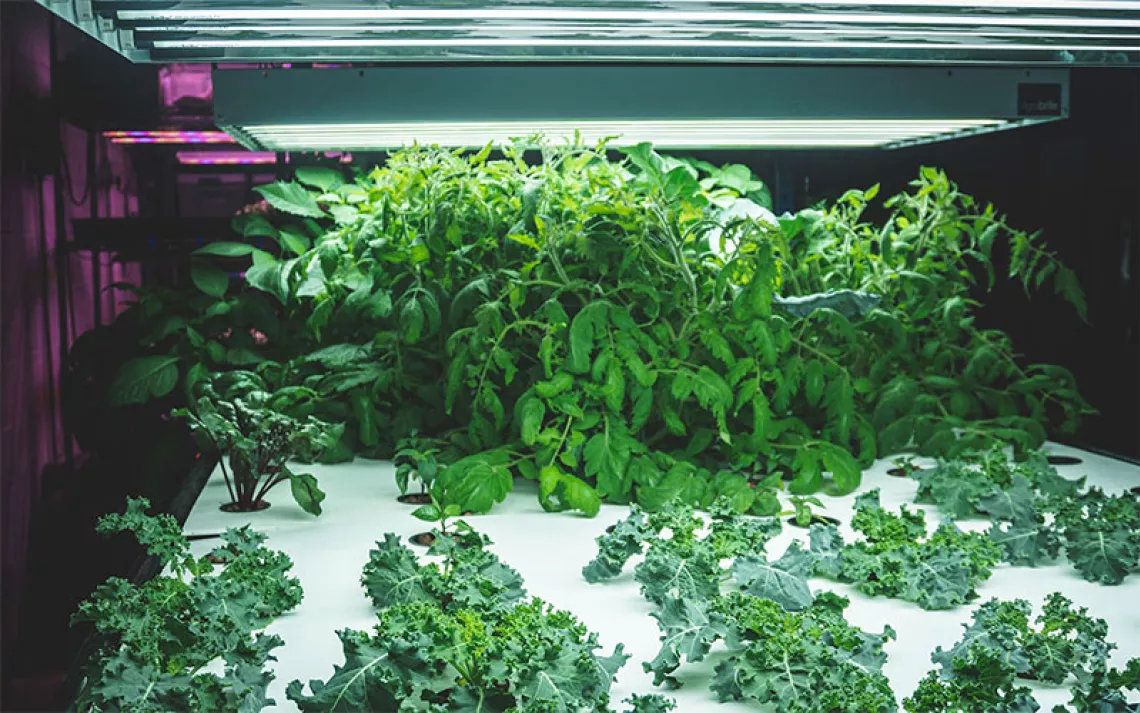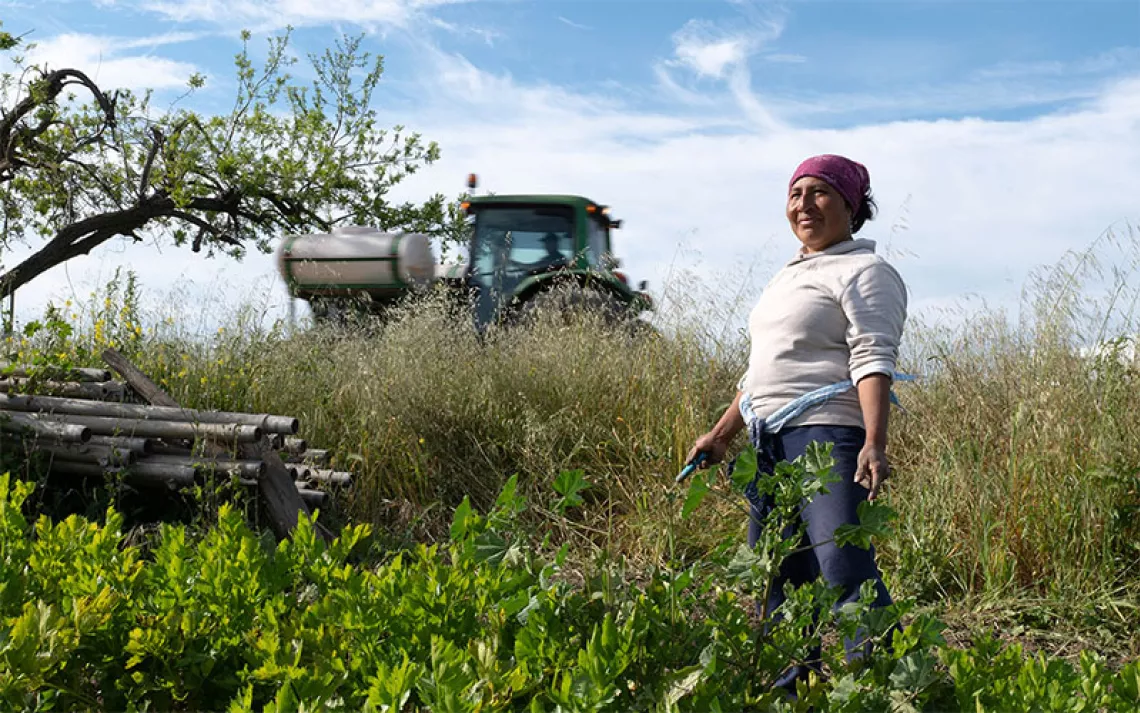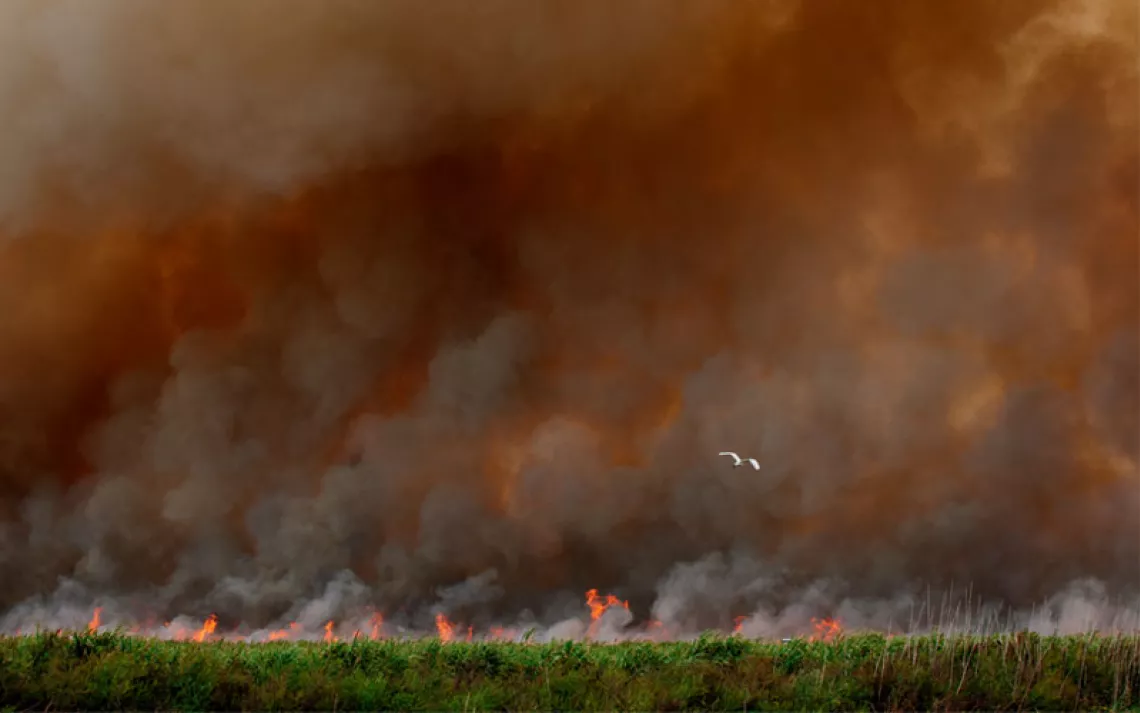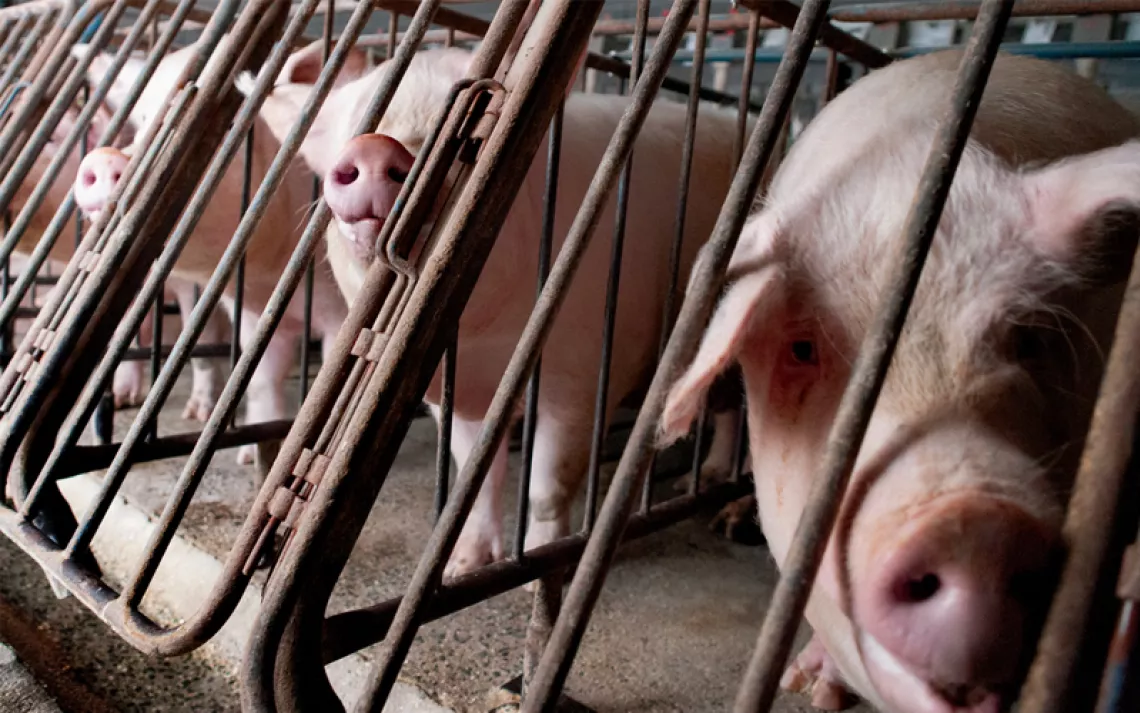Oil and Agriculture Don't Mix

Photo by iStock
California is well known as an agricultural powerhouse. The state produces about half of the fresh fruits, vegetables, and nuts eaten by Americans, and nearly all of such specialty crops as almonds, raisins, and artichokes. Less well known is the fact that the Golden State is also an oil powerhouse. Even though California oil production peaked in the 1980s, the state remains the third biggest oil-producing state in the U.S., behind Texas and North Dakota. Let that sink in for a minute: California produces more oil than that infamous petro-state, Alaska.
But while the California ag and oil industries occupy the same territory—in some places, oil wells operate in the middle of farm fields—their interests aren’t necessarily aligned. A new report by the Pacific Institute, an Oakland-based think tank, finds that the often haphazard disposal of oil and gas wastewater poses a risk to the groundwater resources on which farmers rely.
In June, the California Council on Science and Technology released a report (mandated by the California Senate) that investigated the impacts of hydraulic fracturing (or fracking) on state water resources. But that study raised as many questions as it answered, and so the Pacific Institute decided to dig deeper. The new study, released on Wednesday, concludes: “Oil and gas exploration and production have the potential to affect California’s agricultural and food systems, from farmworkers to consumers of agricultural products.”
“The big takeaway, the thing that bubbled up to the surface the most, is that chemical use by the [oil and gas] industry—not just manmade chemicals but the naturally occurring chemicals that are in the waste stream—needs to be carefully handled, and there needs to be better oversight and stronger regulations,” says report co-author Matthew Heberger, a hydrologist by training.
The biggest concern, Heberger says, is the California oil and gas industry’s continued use of unlined, open-aired pits for wastewater disposal. In 2013, an estimated 18 percent of oil-field wastewater (about 24 billion gallons) was disposed of in percolation pits. There are at least 933 such pits, most of them in Kern Country, the top oil-producing county in America and also a major farming area. Over time, that wastewater seeps into the groundwater—the same groundwater often used for irrigating crops. While other oil states such as Texas and New Mexico have banned this practice, it remains legal in California.
“The fact that a bunch of other oil-producing states have phased this out, and we haven’t, and we call ourselves an environmental leader—well, it’s somewhat incongruous,” Heberger says.
While some oil and gas wastewater is left in unlined pits, most of it (about 60 percent) is injected underground, a practice that is assumed to be safer than surface disposal. But that’s an untested assumption, the Pacific Institute cautions. “The state does not monitor groundwater to detect contamination from injection wells, nor does it require operators to do so,” the report states.
Another gobsmacking finding from the Pacific Institute report: In some places, oil and gas wastewater (what the industry euphemistically calls “produced water”) is put directly onto farm fields after being diluted with other freshwater resources. The Los Angeles Times and Mother Jones reported on this phenomenon earlier this year, and now the Pacific Institute report sheds new light on the practice. According to the study, Chevron sells about 21 million gallons of produced water per day to the Cawelo Water District, water that is then lightly treated and used to irrigate almonds, citrus, and a variety of vegetable crops. This kind of “beneficial reuse of oil-field wastewater” (another incredible industry euphemism ) has been going on for at least 20 years. Yet few independent studies have examined what level of chemicals in oil-field wastes, if any, is safe for farmworkers, animals, and consumers.
“If you go around Bakersfield, Chevron and the California Resources Corporation (which used to be Occidental Petroleum) are selling their produced water back to farmers,” Heberger says. “They treat it, and they have a permit to do this.... We are assuming it’s safe because it’s permitted. But that’s not really based on anything. It’s not based on any science. It’s based on the treatment tech that was available 40 years ago, when this regulation was written.”
None of these issues—the improper surface or underground disposal of wastewater, the reapplication of wastewater onto farm fields—can be properly addressed without reforming state and federal laws, Heberger says. Existing loopholes in the Clean Water Act need to be closed, and the Toxic Substances Control Act is also badly in need of an overhaul. In recent years, the practice of fracking has taken a beating from environmental activists, but the oil and gas industry as a whole needs to be more closely scrutinized, Heberger says. “It’s not just fracking. It’s oil production in general that we need to be concerned about.”
 The Magazine of The Sierra Club
The Magazine of The Sierra Club



